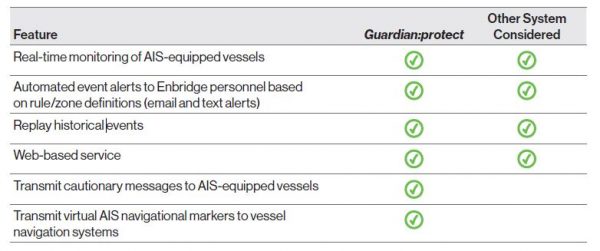Guardian will reduce anchor strikes to Enbridge Line 5 Pipeline by 88.4% – Independent Analyst
Enbridge commissioned a report by independent Reliability Consultant C-FER Technologies that evaluated Vesper Marine’s Guardian:protect system and concluded that it is the most effective communication and warning technology, and would mitigate the risk of anchor strikes by 88.4%.
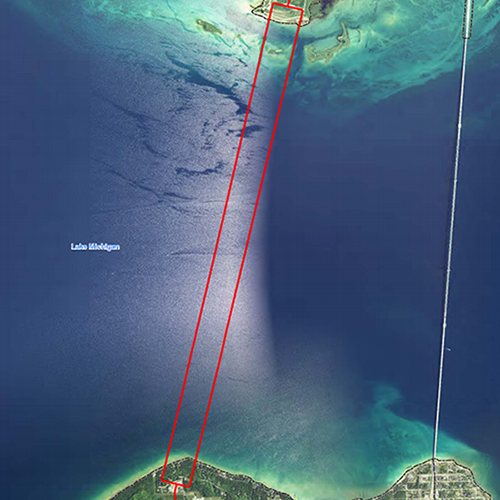
Enbridge Line 5 and the American Transmission Company Cable, Straits of Mackinac
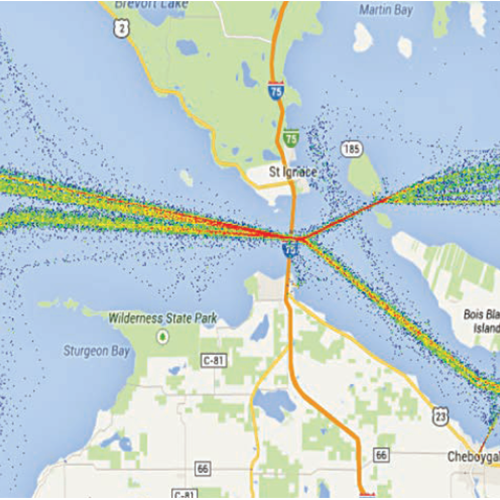
Shipping-traffic-density map shows traffic as it approaches the Mackinac Bridge and travels along the Straits shipping channel.
On April 1st 2018, tug vessel Clyde S. VanEnkevort, dropped an anchor that ruptured a pair of power cables and dented Enbridge’s Line 5 oil pipeline. The damaged power cables, owned and operated by Wisconsin-based American Transmission Co., leaked nearly 600 gallons of mineral oil insulation fluid.
The Straits are legally a “no anchor” zone and nautical charts warn against anchor drops in the area. Additionally, the American Transmission Company (ATC) has large signs on each side of the Straits warning vessels not to anchor in the area.
To assess and report on measures that could be taken to mitigate the risk of anchor strikes in the Straits, Enbridge engaged Reliability Consultant C-FER Technologies. C-FER assessed the impact of communication and warning technology, Guardian from Vesper Marine to reduce the probability of an anchor coming into contact with Line 5 and causing a product release into the Straits. The key findings of C-FER Technologies were that the Guardian:protect implementation which sends both a warning message if a vessel is detected to be anchoring as well as an advisory message to all vessels approaching the Straits of a pipeline crossing ahead and the need for vessel operators to confirm that anchors are properly stowed results in an 89% reduction in the risk of anchor strikes.
Earlier, Enbridge had evaluated two marine AIS technologies to determine whether they could be used to actively monitor vessels in the Straits that come in close proximity to the dual Line 5 pipelines. While both systems offered the ability to identify, track and notify Enbridge personnel of vessels near the crossing of the dual pipelines, Enbridge ultimately determined that the functionality of Vesper Marine’s Guardian:protect system provides the most benefit to Enbridge in mitigating anchor strike risk.
Enbridge selected the Guardian:protect system because it provides the ability to send early-warning messages directly to vessels that pose an anchoring risk. The C-FER Technologies Report focuses on the Guardian:protect system in its analysis.
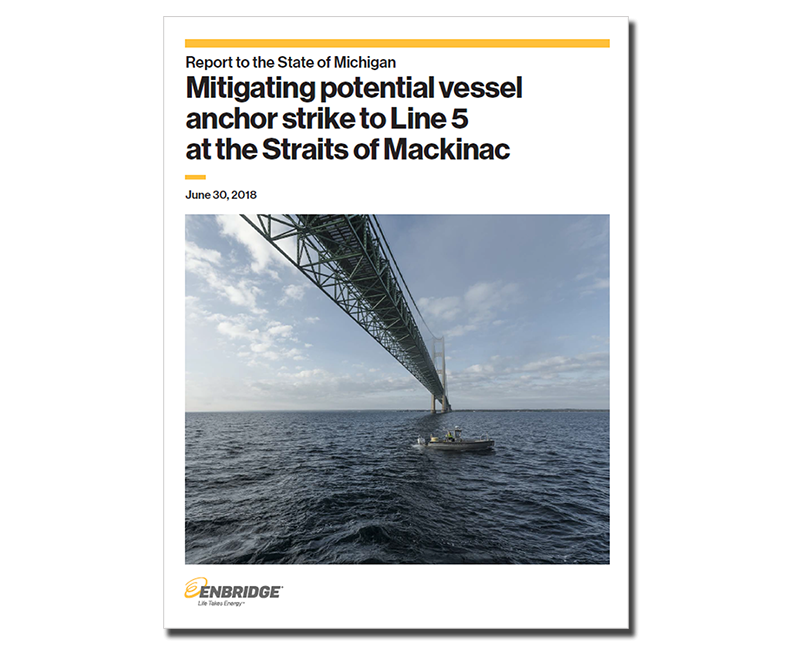
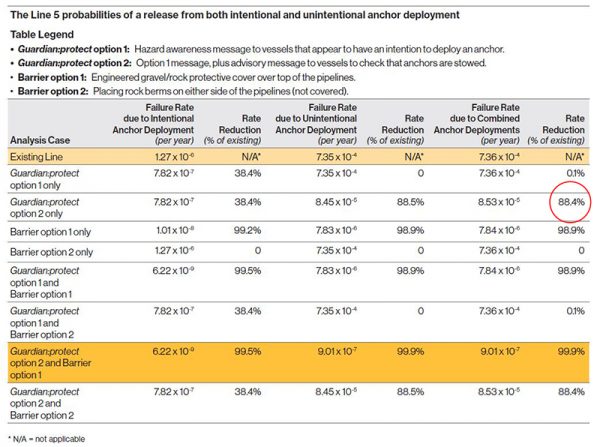
C-FER Technologies Report on the options for mitigating risk of anchor strikes and their success rates
